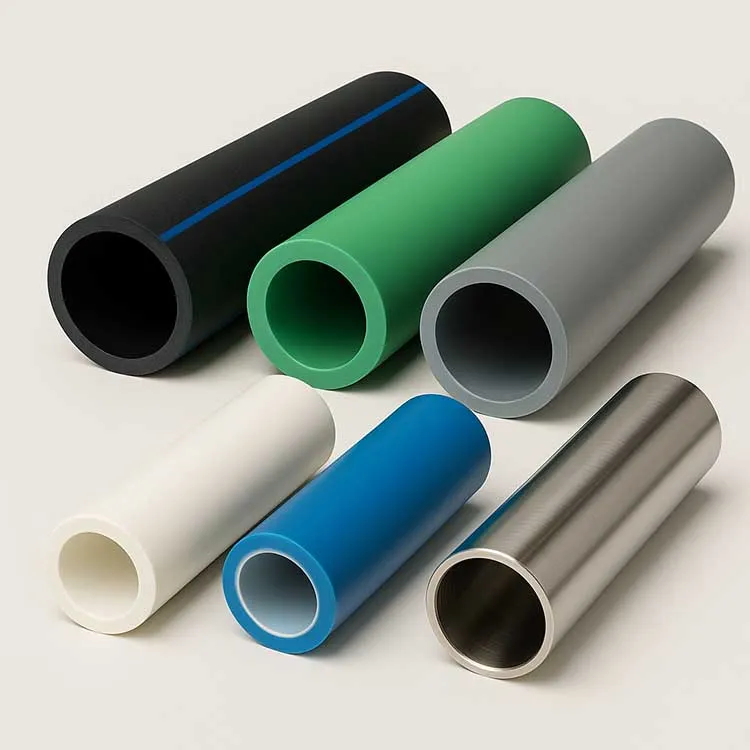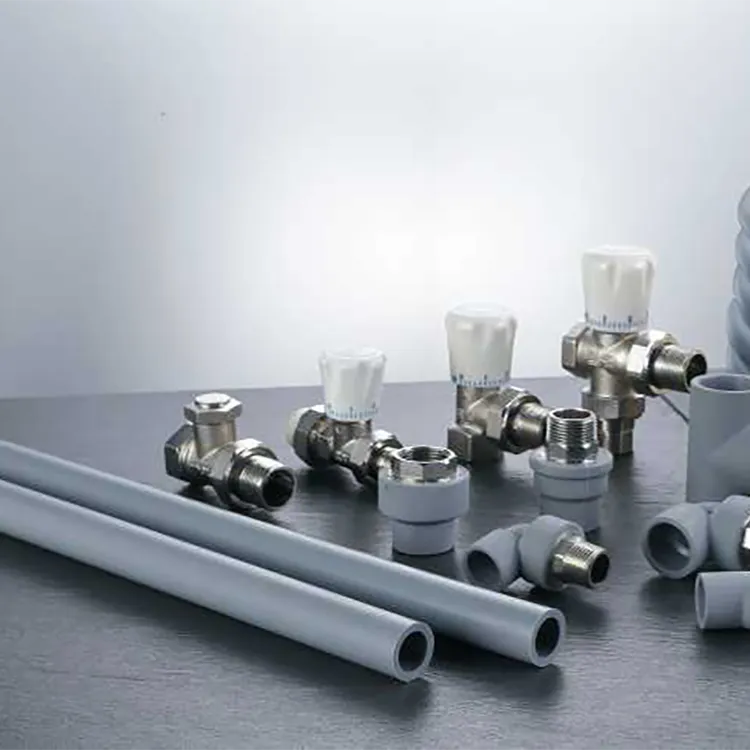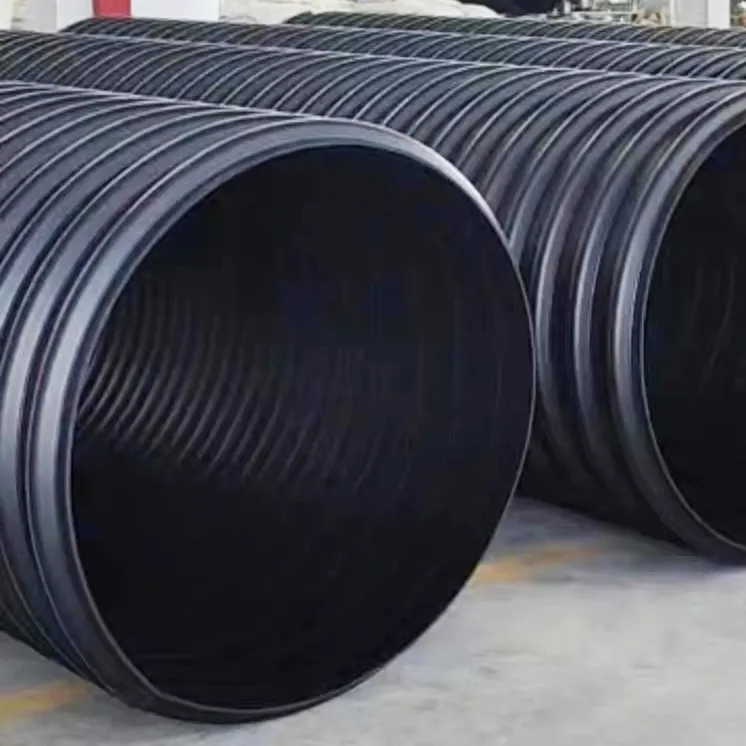In the field of fishery water treatment, the selection of suitable piping materials is crucial to ensure the efficiency and reliability of the system. As a common and widely used material, 1/2 inch PVC pipe has many advantages in fishery water treatment. This article will discuss the application of 1/2-inch PVC pipes in fishery water treatment systems through specific data and cases.
1/2 inch PVC pipe has the following features:
Good Size:
1/2 inch PVC pipe is ideal for small to medium fishery water treatment systems. Its suitable size can meet the general water flow requirements and is suitable for small and medium-sized farms or aquariums and other places. Pipes of this size balance the flow velocity and pressure of the system, providing consistent and reliable water treatment.
Corrosion resistance:
1/2 inch PVC pipe has excellent corrosion resistance, which enables it to be used for a long time in the fishery water treatment environment. It resists corrosion from chemicals, salt and pollutants in the water, reducing the risk of pipe damage and clogging. The 1/2-inch PVC pipe maintains excellent corrosion resistance even in the case of transporting water over long distances, ensuring system stability and durability.
Lightweight and easy to install:
1/2-inch PVC pipe is relatively light, making it easier to install in fishery water treatment. Its lightweight nature makes handling and installation quick and easy, saving time and labor costs. In addition, the connection process of PVC pipes is relatively simple, and common connection methods include glued connections and mechanical connections. The use of connectors and brackets ensures pipe stability and structural integrity, further increasing installation efficiency.
It can be seen from the above content that 1/2-inch PVC pipes are the choice of small and medium-sized fishery water treatment systems, with the characteristics of moderate size, strong corrosion resistance, and light and easy installation. Its suitable size can meet the general water flow requirements, and its excellent corrosion resistance can resist the erosion of chemicals and pollutants in the water, ensuring the reliability and durability of the system. In addition, the portability and easy installation of 1/2-inch PVC pipes reduce construction and maintenance costs and improve work efficiency. Whether it is a small-scale farm or an aquarium, choosing 1/2-inch PVC pipe is a wise choice to meet the requirements of fishery water treatment systems and provide a reliable water treatment solution.
Specification
When it comes to using 1/2 inch PVC pipe for fishery water treatment, there are a few considerations to keep in mind:
PVC (Polyvinyl Chloride) pipes are commonly used in water treatment applications due to their durability, chemical resistance, and affordability. Ensure that the PVC pipe you select is suitable for water usage.
1/2 inch PVC pipe refers to the nominal diameter of the pipe, which is approximately 0.5 inches or 12.7 millimeters. This size is suitable for low to moderate water flow rates commonly found in fishery water treatment systems.
PVC pipes are available in different schedules, which indicate their pressure-bearing capacity. For fishery water treatment, a standard schedule like Schedule 40 is often sufficient. However, if you anticipate higher pressures or specific requirements, you may opt for a higher schedule, such as Schedule 80.
If the PVC pipe will be exposed to sunlight or outdoor conditions, consider using UV-resistant PVC pipe or applying a UV protective coating to prevent degradation due to prolonged exposure to sunlight.
Ensure that the fittings and connectors you choose are compatible with 1/2 inch PVC pipe. Common options include PVC solvent cement or threaded connectors, depending on the specific needs of your fishery water treatment system.
Follow proper installation practices for PVC pipes, such as ensuring clean and square cuts, using appropriate primers and adhesives (for solvent cement joints), and providing proper support for the pipe.
Check local regulations or guidelines related to fishery water treatment to ensure compliance with any specific requirements regarding pipe materials, sizes, or installation methods.
Remember to consult with a professional or specialist in fishery water treatment to determine the specific requirements and to ensure that the 1/2 inch PVC pipe is suitable for your application.
Here are some specific figures related to 1/2 inch PVC pipe:
Maximum Working Pressure: 1/2 inch PVC pipe is typically capable of 50-60 psi (345-414 kPa) working pressure.
Flow Capacity: Flow capacity for 1/2" PVC pipe is typically between 5-8 gallons (19-30 liters) per minute, depending on system design and pipe length.
Durability: PVC piping typically has a long life, able to withstand the stress and use under normal operating conditions of fishery water treatment systems.
Specific case:
Take, for example, an aquaculture fishery water treatment system that uses 1/2-inch PVC pipes for water delivery and distribution. The system has the following characteristics:
Mainly deal with fresh water supply and waste water discharge.
1/2 inch PVC pipes are used for the layout of water supply and drainage pipe network.
Pipeline length totals 1,000 feet (304.8 meters).
Average water flow is 6 gallons (23 liters) per minute.
The installation of PVC pipes is simple and the construction time is greatly shortened.
The corrosion resistance of PVC pipes ensures stable system operation and low maintenance costs.
Durability and Chemical Resistance
1/2 inch PVC (Polyvinyl Chloride) pipe offers exceptional durability and chemical resistance, making it an ideal choice for fishery water treatment. PVC pipes are resistant to corrosion and degradation caused by water, chemicals, and biological agents commonly found in fishery environments. This ensures a longer lifespan for the pipes and reduces the need for frequent replacements.
Optimal Size for Fishery Water Treatment
The 1/2 inch diameter of PVC pipe is well-suited for low to moderate water flow rates typically encountered in fishery water treatment systems. It provides sufficient water flow while maintaining efficient operation and minimizing pressure drop. This size is commonly used for tasks such as water circulation, aeration, and distribution of treated water.
Affordability and Availability
1/2 inch PVC pipe is readily available and cost-effective compared to other piping materials. Its affordability makes it an attractive option for fishery water treatment systems, especially for small to medium-scale operations. The availability of PVC pipes in various lengths and fittings allows for easy customization and installation according to specific project requirements.
UV Resistance for Outdoor Applications
In fishery water treatment systems that are exposed to sunlight or located outdoors, UV resistance is an important consideration. PVC pipes with UV-resistant properties or applying a UV protective coating can help prevent degradation caused by prolonged exposure to sunlight. This ensures the longevity and integrity of the pipe in outdoor environments.
Ease of Installation and Maintenance
1/2 inch PVC pipes are lightweight, making them easy to handle and install. They can be easily cut, joined, and connected using solvent cement or threaded fittings. The installation process is relatively simple, requiring minimal tools and expertise. Additionally, PVC pipes have smooth internal surfaces, reducing the risk of clogs and facilitating easier maintenance and cleaning.
Compliance with Regulations
When using 1/2 inch PVC pipe for fishery water treatment, it is important to comply with local regulations and guidelines. Familiarize yourself with any specific requirements related to pipe materials, sizes, or installation methods to ensure adherence to the standards and regulations governing fishery water treatment in your area.
Conclusion:
1/2 inch PVC pipe is an economical and reliable choice in fishery water treatment. Its superior corrosion resistance, light and easy installation, and moderate flow capacity make it an ideal choice for small and medium-sized fishery water treatment systems. Through the above specific data and cases, we can see the importance and advantages of 1/2 inch PVC pipes in fishery water treatment. It is recommended that in a specific project, according to the actual needs and system design, select the appropriate pipe size, and follow the correct installation and maintenance guidelines to ensure efficient operation and sustainable development of the system.
Choosing the right piping material is vital for effective fishery water treatment. 1/2 inch PVC pipe offers numerous benefits, including durability, chemical resistance, affordability, and ease of installation. Its optimal size and UV resistance make it an excellent choice for fishery water treatment systems. When properly installed and maintained, 1/2 inch PVC pipe can contribute to the longevity, efficiency, and overall success of fishery water treatment operations, ensuring the well-being and health of the aquatic life.



981.webp)

 (1)379.webp)

294.webp)
476.webp)
420.webp)
146.webp)
460.webp)
287.webp)
274.webp)
688.webp)


